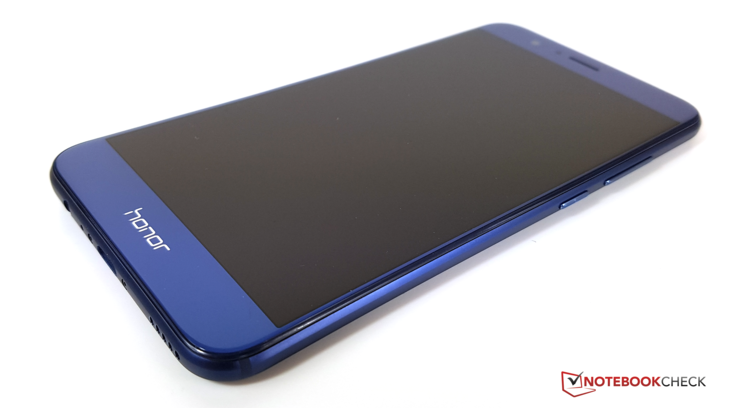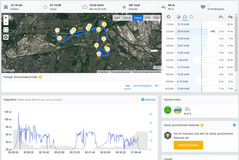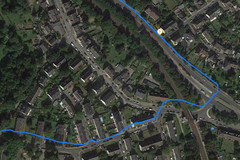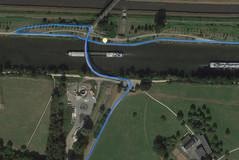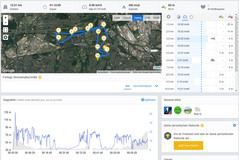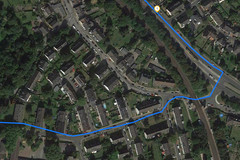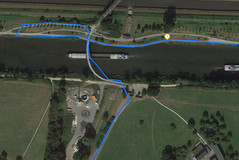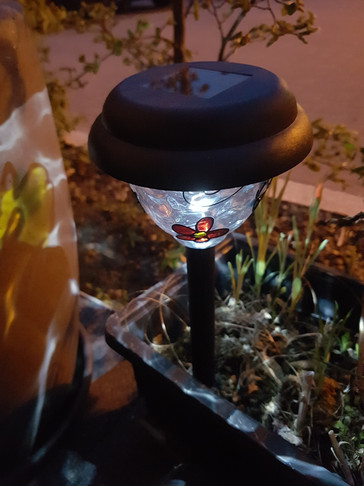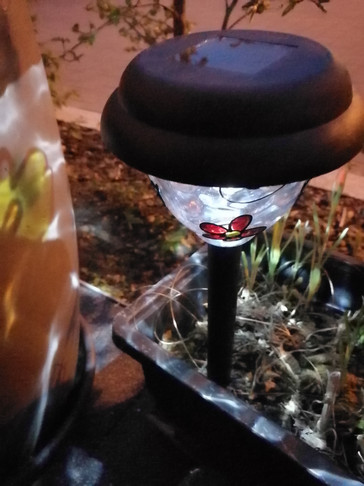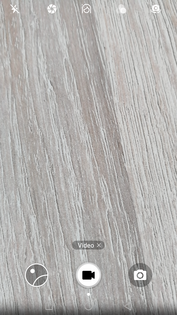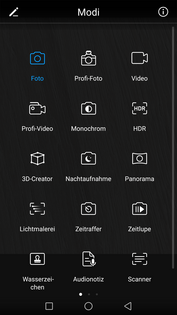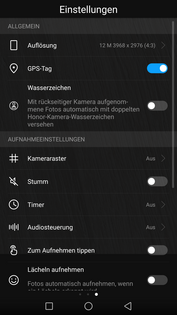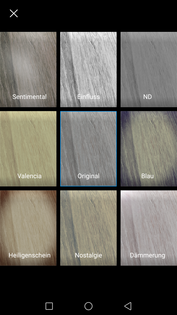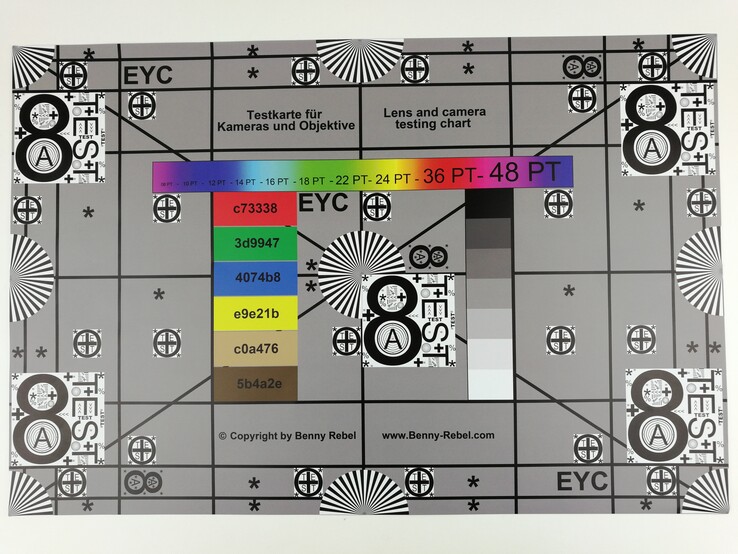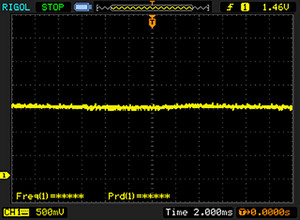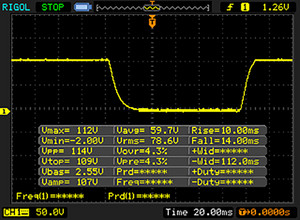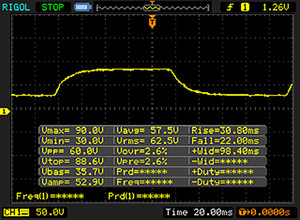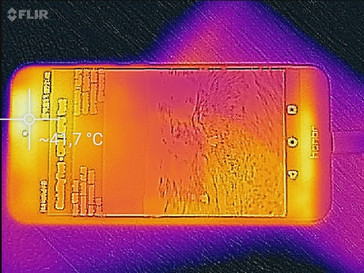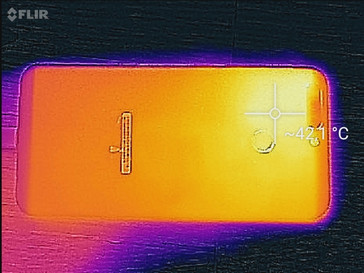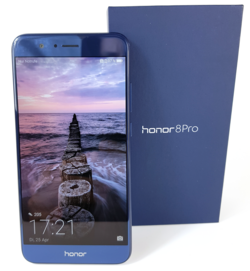Recensione breve dello Smartphone Honor 8 Pro
I nostri Top 10
» Top 10 Portatili Multimedia
» Top 10 Portatili Gaming
» Top 10 Portatili Gaming Leggeri
» Top 10 Portatili da Ufficio e Business economici
» Top 10 Portatili Premium da Ufficio/Business
» Top 10 Portatili sotto i 300 Euro
» Top 10 Portatili sotto i 500 Euro
» Top 10 dei Portatili Workstation
» Top 10 Subnotebooks
» Top 10 Ultrabooks
» Top 10 Convertibili
» Top 10 Tablets
» Top 10 Tablets Windows
» Top 10 Smartphones
Size Comparisons
| Networking | |
| iperf3 transmit AX12 | |
| Samsung Galaxy S8 Plus | |
| Huawei P10 | |
| Samsung Galaxy S7 Edge | |
| OnePlus 3T | |
| HTC U Play | |
| Honor 8 Pro | |
| iperf3 receive AX12 | |
| Samsung Galaxy S8 Plus | |
| Huawei P10 | |
| Samsung Galaxy S7 Edge | |
| OnePlus 3T | |
| HTC U Play | |
| Honor 8 Pro | |
| |||||||||||||||||||||||||
Distribuzione della luminosità: 91 %
Al centro con la batteria: 541 cd/m²
Contrasto: 1803:1 (Nero: 0.3 cd/m²)
ΔE ColorChecker Calman: 3.2 | ∀{0.5-29.43 Ø4.78}
ΔE Greyscale Calman: 4 | ∀{0.09-98 Ø5}
Gamma: 2.27
CCT: 7120 K
| Honor 8 Pro IPS, 2560x1440, 5.7" | Huawei P10 LTPS, 1920x1080, 5.1" | Huawei P9 Plus AMOLED, 1920x1080, 5.5" | HTC U Play Super LCD, 1920x1080, 5.2" | HTC 10 Super LCD 5, 2560x1440, 5.2" | Samsung Galaxy S7 Edge Super AMOLED, 2560x1440, 5.5" | Samsung Galaxy S8 Plus Super AMOLED, 2960x1440, 6.2" | OnePlus 3T Optic-AMOLED, 1920x1080, 5.5" | Lenovo Moto Z AMOLED, 2560x1440, 5.5" | |
|---|---|---|---|---|---|---|---|---|---|
| Screen | -19% | -34% | -20% | -6% | 30% | 29% | -59% | 13% | |
| Brightness middle (cd/m²) | 541 | 547 1% | 361 -33% | 424 -22% | 445 -18% | 554 2% | 560 4% | 421 -22% | 485 -10% |
| Brightness (cd/m²) | 514 | 556 8% | 366 -29% | 432 -16% | 434 -16% | 552 7% | 562 9% | 430 -16% | 490 -5% |
| Brightness Distribution (%) | 91 | 86 -5% | 87 -4% | 90 -1% | 93 2% | 96 5% | 93 2% | 84 -8% | 92 1% |
| Black Level * (cd/m²) | 0.3 | 0.43 -43% | 0.25 17% | 0.36 -20% | |||||
| Contrast (:1) | 1803 | 1272 -29% | 1696 -6% | 1236 -31% | |||||
| Colorchecker dE 2000 * | 3.2 | 4.8 -50% | 5.1 -59% | 5.7 -78% | 2.8 12% | 1.59 50% | 1.7 47% | 7.1 -122% | 2.1 34% |
| Colorchecker dE 2000 max. * | 7.2 | 8.8 -22% | 10 -39% | 10.8 -50% | 5.8 19% | 2.56 64% | 3.4 53% | 15.3 -113% | 5.5 24% |
| Greyscale dE 2000 * | 4 | 4.5 -13% | 5.5 -38% | 4.1 -3% | 3.7 7% | 2.01 50% | 1.6 60% | 6.8 -70% | 2.6 35% |
| Gamma | 2.27 97% | 2.39 92% | 2.24 98% | 2.32 95% | 2.31 95% | 2.01 109% | 2.13 103% | 2.23 99% | 2.23 99% |
| CCT | 7120 91% | 7194 90% | 7388 88% | 7359 88% | 7164 91% | 6321 103% | 6435 101% | 7866 83% | 6843 95% |
| Color Space (Percent of AdobeRGB 1998) (%) | 82.12 | 81.57 | 88.14 | ||||||
| Color Space (Percent of sRGB) (%) | 99.98 | 99.87 | 100 |
* ... Meglio usare valori piccoli
Sfarfallio dello schermo / PWM (Pulse-Width Modulation)
| flickering dello schermo / PWM non rilevato | |||
In confronto: 53 % di tutti i dispositivi testati non utilizza PWM per ridurre la luminosita' del display. Se è rilevato PWM, una media di 8098 (minimo: 5 - massimo: 343500) Hz è stata rilevata. | |||
Tempi di risposta del Display
| ↔ Tempi di risposta dal Nero al Bianco | ||
|---|---|---|
| 24 ms ... aumenta ↗ e diminuisce ↘ combinato | ↗ 10 ms Incremento | |
| ↘ 14 ms Calo | ||
| Lo schermo mostra buoni tempi di risposta durante i nostri tests, ma potrebbe essere troppo lento per i gamers competitivi. In confronto, tutti i dispositivi di test variano da 0.1 (minimo) a 240 (massimo) ms. » 53 % di tutti i dispositivi è migliore. Questo significa che i tempi di risposta rilevati sono peggiori rispetto alla media di tutti i dispositivi testati (20.2 ms). | ||
| ↔ Tempo di risposta dal 50% Grigio all'80% Grigio | ||
| 52.8 ms ... aumenta ↗ e diminuisce ↘ combinato | ↗ 30.8 ms Incremento | |
| ↘ 22 ms Calo | ||
| Lo schermo mostra tempi di risposta lenti nei nostri tests e sarà insoddisfacente per i gamers. In confronto, tutti i dispositivi di test variano da 0.165 (minimo) a 636 (massimo) ms. » 89 % di tutti i dispositivi è migliore. Questo significa che i tempi di risposta rilevati sono peggiori rispetto alla media di tutti i dispositivi testati (31.6 ms). | ||
| AnTuTu v6 - Total Score (ordina per valore) | |
| Honor 8 Pro | |
| Huawei P10 | |
| Huawei P9 Plus | |
| HTC U Play | |
| HTC 10 | |
| Samsung Galaxy S7 Edge | |
| Samsung Galaxy S8 Plus | |
| OnePlus 3T | |
| Lenovo Moto Z | |
| Geekbench 4.0 | |
| 64 Bit Single-Core Score (ordina per valore) | |
| Huawei P10 | |
| HTC U Play | |
| Samsung Galaxy S7 Edge | |
| Samsung Galaxy S8 Plus | |
| OnePlus 3T | |
| Lenovo Moto Z | |
| 64 Bit Multi-Core Score (ordina per valore) | |
| Huawei P10 | |
| HTC U Play | |
| Samsung Galaxy S7 Edge | |
| Samsung Galaxy S8 Plus | |
| OnePlus 3T | |
| Lenovo Moto Z | |
| Geekbench 4.4 | |
| 64 Bit Multi-Core Score (ordina per valore) | |
| Honor 8 Pro | |
| Huawei P10 | |
| HTC 10 | |
| Samsung Galaxy S8 Plus | |
| 64 Bit Single-Core Score (ordina per valore) | |
| Honor 8 Pro | |
| Huawei P10 | |
| HTC 10 | |
| Samsung Galaxy S8 Plus | |
| GFXBench (DX / GLBenchmark) 2.7 | |
| T-Rex Onscreen (ordina per valore) | |
| Honor 8 Pro | |
| Huawei P10 | |
| Huawei P9 Plus | |
| HTC U Play | |
| HTC 10 | |
| Samsung Galaxy S7 Edge | |
| Samsung Galaxy S8 Plus | |
| OnePlus 3T | |
| Lenovo Moto Z | |
| 1920x1080 T-Rex Offscreen (ordina per valore) | |
| Honor 8 Pro | |
| Huawei P10 | |
| Huawei P9 Plus | |
| HTC U Play | |
| HTC 10 | |
| Samsung Galaxy S7 Edge | |
| Samsung Galaxy S8 Plus | |
| OnePlus 3T | |
| Lenovo Moto Z | |
| GFXBench 3.0 | |
| on screen Manhattan Onscreen OGL (ordina per valore) | |
| Honor 8 Pro | |
| Huawei P10 | |
| Huawei P9 Plus | |
| HTC U Play | |
| HTC 10 | |
| Samsung Galaxy S7 Edge | |
| Samsung Galaxy S8 Plus | |
| OnePlus 3T | |
| Lenovo Moto Z | |
| 1920x1080 1080p Manhattan Offscreen (ordina per valore) | |
| Honor 8 Pro | |
| Huawei P10 | |
| Huawei P9 Plus | |
| HTC U Play | |
| HTC 10 | |
| Samsung Galaxy S7 Edge | |
| Samsung Galaxy S8 Plus | |
| OnePlus 3T | |
| Lenovo Moto Z | |
| GFXBench 3.1 | |
| on screen Manhattan ES 3.1 Onscreen (ordina per valore) | |
| Honor 8 Pro | |
| Huawei P10 | |
| Huawei P9 Plus | |
| HTC U Play | |
| HTC 10 | |
| Samsung Galaxy S7 Edge | |
| Samsung Galaxy S8 Plus | |
| OnePlus 3T | |
| Lenovo Moto Z | |
| 1920x1080 Manhattan ES 3.1 Offscreen (ordina per valore) | |
| Honor 8 Pro | |
| Huawei P10 | |
| Huawei P9 Plus | |
| HTC U Play | |
| HTC 10 | |
| Samsung Galaxy S7 Edge | |
| Samsung Galaxy S8 Plus | |
| OnePlus 3T | |
| Lenovo Moto Z | |
| PCMark for Android - Work performance score (ordina per valore) | |
| Honor 8 Pro | |
| Huawei P10 | |
| Huawei P9 Plus | |
| HTC U Play | |
| HTC 10 | |
| Samsung Galaxy S7 Edge | |
| Samsung Galaxy S8 Plus | |
| OnePlus 3T | |
| Lenovo Moto Z | |
| Octane V2 - Total Score | |
| Samsung Galaxy S8 Plus | |
| Samsung Galaxy S7 Edge | |
| Huawei P9 Plus | |
| Huawei P10 | |
| Honor 8 Pro | |
| OnePlus 3T | |
| HTC 10 | |
| Lenovo Moto Z | |
| HTC U Play | |
| Mozilla Kraken 1.1 - Total | |
| HTC U Play | |
| Honor 8 Pro | |
| Lenovo Moto Z | |
| HTC 10 | |
| Huawei P10 | |
| Huawei P9 Plus | |
| OnePlus 3T | |
| Samsung Galaxy S7 Edge | |
| Samsung Galaxy S8 Plus | |
| JetStream 1.1 - Total Score | |
| Samsung Galaxy S7 Edge | |
| Huawei P9 Plus | |
| Samsung Galaxy S8 Plus | |
| Honor 8 Pro | |
| Huawei P10 | |
| OnePlus 3T | |
| HTC 10 | |
| Lenovo Moto Z | |
| HTC U Play | |
| WebXPRT 2015 - Overall | |
| Samsung Galaxy S7 Edge | |
| Samsung Galaxy S8 Plus | |
| Honor 8 Pro | |
| Huawei P10 | |
| OnePlus 3T | |
| Huawei P9 Plus | |
| Lenovo Moto Z | |
| HTC 10 | |
* ... Meglio usare valori piccoli
| Honor 8 Pro Mali-G71 MP8, Kirin 960, 64 GB UFS 2.1 Flash | Huawei P10 Mali-G71 MP8, Kirin 960, 64 GB UFS 2.1 Flash | Huawei P9 Plus Mali-T880 MP4, Kirin 955, 64 GB eMMC Flash | HTC U Play Mali-T860 MP2, Helio P10 MT6755, 32 GB eMMC Flash | HTC 10 Adreno 530, 820 MSM8996, 32 GB eMMC Flash | Samsung Galaxy S7 Edge Mali-T880 MP12, Exynos 8890, 32 GB UFS 2.0 Flash | Samsung Galaxy S8 Plus Mali-G71 MP20, Exynos 8895, 64 GB UFS 2.1 Flash | OnePlus 3T Adreno 530, SD 821, 64 GB UFS 2.0 Flash | Lenovo Moto Z Adreno 530, 820 MSM8996, 32 GB eMMC Flash | |
|---|---|---|---|---|---|---|---|---|---|
| AndroBench 3-5 | 0% | -39% | -51% | -19% | -16% | 1% | -33% | -7% | |
| Sequential Write 256KB SDCard (MB/s) | 32.16 | 32.19 0% | 24.95 -22% | 23.6 -27% | 65.4 103% | 50.4 57% | 57.2 78% | 45.64 42% | |
| Sequential Read 256KB SDCard (MB/s) | 54.2 | 54.2 0% | 62.5 15% | 36.8 -32% | 83.3 54% | 76.4 41% | 71.1 31% | 78.5 45% | |
| Random Write 4KB (MB/s) | 151.6 | 152.3 0% | 51.2 -66% | 52.7 -65% | 15.89 -90% | 15.79 -90% | 15.27 -90% | 74.4 -51% | 74.9 -51% |
| Random Read 4KB (MB/s) | 166.4 | 168.4 1% | 39.33 -76% | 32 -81% | 29.92 -82% | 86.7 -48% | 127.2 -24% | 123.6 -26% | 117.2 -30% |
| Sequential Write 256KB (MB/s) | 187.1 | 189.8 1% | 140.4 -25% | 135.5 -28% | 115.6 -38% | 145.1 -22% | 194.2 4% | 165.3 -12% | 168.3 -10% |
| Sequential Read 256KB (MB/s) | 738 | 738 0% | 284.3 -61% | 197.3 -73% | 275.1 -63% | 487.3 -34% | 788 7% | 436.4 -41% | 439.7 -40% |
| Dead Trigger 2 | |||
| Settaggi | Valore | ||
| high | 30 fps | ||
| Asphalt 8: Airborne | |||
| Settaggi | Valore | ||
| high | 29 fps | ||
| very low | 29 fps | ||
(±) La temperatura massima sul lato superiore è di 44.8 °C / 113 F, rispetto alla media di 35.2 °C / 95 F, che varia da 21.9 a 247 °C per questa classe Smartphone.
(±) Il lato inferiore si riscalda fino ad un massimo di 41.2 °C / 106 F, rispetto alla media di 34 °C / 93 F
(±) In idle, la temperatura media del lato superiore è di 33.3 °C / 92 F, rispetto alla media deld ispositivo di 32.9 °C / 91 F.
Honor 8 Pro analisi audio
(+) | gli altoparlanti sono relativamente potenti (82.4 dB)
Bassi 100 - 315 Hz
(-) | quasi nessun basso - in media 25.4% inferiori alla media
(-) | bassi non lineari (15.3% delta rispetto alla precedente frequenza)
Medi 400 - 2000 Hz
(+) | medi bilanciati - solo only 3.4% rispetto alla media
(+) | medi lineari (6% delta rispetto alla precedente frequenza)
Alti 2 - 16 kHz
(±) | alti elevati - circa 5.4% superiori alla media
(±) | la linearità degli alti è media (7% delta rispetto alla precedente frequenza)
Nel complesso 100 - 16.000 Hz
(±) | la linearità complessiva del suono è media (23.6% di differenza rispetto alla media
Rispetto alla stessa classe
» 53% di tutti i dispositivi testati in questa classe è stato migliore, 8% simile, 39% peggiore
» Il migliore ha avuto un delta di 11%, medio di 35%, peggiore di 134%
Rispetto a tutti i dispositivi testati
» 70% di tutti i dispositivi testati in questa classe è stato migliore, 6% similare, 24% peggiore
» Il migliore ha avuto un delta di 4%, medio di 24%, peggiore di 134%
Huawei P10 analisi audio
(+) | gli altoparlanti sono relativamente potenti (82.7 dB)
Bassi 100 - 315 Hz
(-) | quasi nessun basso - in media 20.9% inferiori alla media
(±) | la linearità dei bassi è media (12.6% delta rispetto alla precedente frequenza)
Medi 400 - 2000 Hz
(+) | medi bilanciati - solo only 4.2% rispetto alla media
(+) | medi lineari (6% delta rispetto alla precedente frequenza)
Alti 2 - 16 kHz
(±) | alti elevati - circa 5.5% superiori alla media
(+) | alti lineari (4.9% delta rispetto alla precedente frequenza)
Nel complesso 100 - 16.000 Hz
(±) | la linearità complessiva del suono è media (23.6% di differenza rispetto alla media
Rispetto alla stessa classe
» 53% di tutti i dispositivi testati in questa classe è stato migliore, 8% simile, 39% peggiore
» Il migliore ha avuto un delta di 11%, medio di 35%, peggiore di 134%
Rispetto a tutti i dispositivi testati
» 70% di tutti i dispositivi testati in questa classe è stato migliore, 6% similare, 24% peggiore
» Il migliore ha avuto un delta di 4%, medio di 24%, peggiore di 134%
OnePlus 3T analisi audio
(+) | gli altoparlanti sono relativamente potenti (84.3 dB)
Bassi 100 - 315 Hz
(-) | quasi nessun basso - in media 24.6% inferiori alla media
(±) | la linearità dei bassi è media (7.2% delta rispetto alla precedente frequenza)
Medi 400 - 2000 Hz
(+) | medi bilanciati - solo only 4.6% rispetto alla media
(+) | medi lineari (4.6% delta rispetto alla precedente frequenza)
Alti 2 - 16 kHz
(±) | alti elevati - circa 7.1% superiori alla media
(+) | alti lineari (2.8% delta rispetto alla precedente frequenza)
Nel complesso 100 - 16.000 Hz
(±) | la linearità complessiva del suono è media (20.9% di differenza rispetto alla media
Rispetto alla stessa classe
» 38% di tutti i dispositivi testati in questa classe è stato migliore, 8% simile, 54% peggiore
» Il migliore ha avuto un delta di 11%, medio di 35%, peggiore di 134%
Rispetto a tutti i dispositivi testati
» 56% di tutti i dispositivi testati in questa classe è stato migliore, 8% similare, 36% peggiore
» Il migliore ha avuto un delta di 4%, medio di 24%, peggiore di 134%
| Off / Standby | |
| Idle | |
| Sotto carico |
|
Leggenda:
min: | |
| Honor 8 Pro 4000 mAh | Huawei P10 3200 mAh | Huawei P9 Plus 3400 mAh | HTC U Play 2500 mAh | HTC 10 3000 mAh | Samsung Galaxy S7 Edge 3600 mAh | Samsung Galaxy S8 Plus 3500 mAh | OnePlus 3T 3400 mAh | Lenovo Moto Z 2600 mAh | |
|---|---|---|---|---|---|---|---|---|---|
| Power Consumption | 8% | 35% | 23% | 15% | 33% | 42% | 15% | 40% | |
| Idle Minimum * (Watt) | 0.98 | 0.83 15% | 0.87 11% | 0.92 6% | 0.68 31% | 0.63 36% | 0.68 31% | 0.61 38% | 0.66 33% |
| Idle Average * (Watt) | 2.27 | 2.1 7% | 1.2 47% | 1.84 19% | 1.49 34% | 1.1 52% | 1.13 50% | 1.77 22% | 1.01 56% |
| Idle Maximum * (Watt) | 2.36 | 2.18 8% | 1.27 46% | 2 15% | 1.91 19% | 1.56 34% | 1.16 51% | 1.81 23% | 1.09 54% |
| Load Average * (Watt) | 6.58 | 6.57 -0% | 4.69 29% | 4.3 35% | 7.4 -12% | 5.95 10% | 4.69 29% | 6.67 -1% | 3.97 40% |
| Load Maximum * (Watt) | 10.12 | 9.32 8% | 5.63 44% | 6.2 39% | 9.71 4% | 6.7 34% | 5.24 48% | 10.98 -8% | 8.34 18% |
* ... Meglio usare valori piccoli
| Honor 8 Pro 4000 mAh | Huawei Mate 9 4000 mAh | Huawei P10 3200 mAh | Huawei P9 Plus 3400 mAh | HTC U Play 2500 mAh | HTC 10 3000 mAh | Samsung Galaxy S8 Plus 3500 mAh | OnePlus 3T 3400 mAh | Lenovo Moto Z 2600 mAh | |
|---|---|---|---|---|---|---|---|---|---|
| Autonomia della batteria | 26% | 16% | 15% | -6% | -7% | 26% | 16% | 14% | |
| Reader / Idle (h) | 23 | 25.6 11% | 25.7 12% | 24.1 5% | 21.7 -6% | 21.2 -8% | 26.1 13% | 23.7 3% | 22.9 0% |
| H.264 (h) | 11.3 | 15.8 40% | 9.7 -14% | 12.9 14% | 8.6 -24% | 10.8 -4% | 12.4 10% | 13.5 19% | 12.1 7% |
| WiFi v1.3 (h) | 9.6 | 12.6 31% | 16.1 68% | 8.8 -8% | 7.9 -18% | 6.9 -28% | 12.3 28% | 8.2 -15% | 6.8 -29% |
| Load (h) | 3 | 3.7 23% | 2.9 -3% | 4.4 47% | 3.7 23% | 3.4 13% | 4.6 53% | 4.7 57% | 5.3 77% |
Pro
Contro
L'Honor 8 Pro è uno smartphone carino e ben costruito di fascia high-end con eccellenti prestazioni di sistema. Rispetto agli attuali dispositivi e a quelli dello scorso anno, abbiamo qualcosa in meno, nonostente la consistente memoria da 6 GB.
Nell'Honor 8 Pro, non vediamo (ancora) il buon rapporto prezzo-prestazioni classico dei dispositivi Honor. Gli smartphones dello scorso anno high-end (come il Samsung Galaxy S7 Edge) a volte offrono un pacchetto complessivamente migliore ad un costo minore, considerando che si tratta di dispositivi che hanno subito un evidente calo di prezzo.
Le features come Bluetooth 4.2 invece del 5.0, la scheda grafica relativamente debole, la fotocamera frontale senza auto-focus, e la USB-2.0 differenziano l'Honor 8 Pro dagli attuali smartphones top di altri produttori. In aggiunta, la batteria non ha ricarica wireless, e il dispositivo non ha certificazioni IP e quindi non è protetto da polvere ed acqua. Le estremità del case sono un po' larghe ed il formato del display è relativamente inefficiente, almeno per un dispositivo del 2017.
Nel complesso, l'Honor 8 Pro è uno smartphone di successo e raccomandabile come alternativa ai dispositivi Huawei P10. Ma a nostro parere non riesce ad arrivare all'olimpo degli smartphones del 2017.
Indipendentemente da questo, le politiche di Huawei di rimuovere componenti hardware lasciano l'amaro in bocca - è discutibile se gli acquirenti dell'Honor-8-Pro saranno contenti di uno spazio di archiviazione UFS-2.1.
Nota: si tratta di una recensione breve, con alcune sezioni non tradotte, per la versione integrale in inglese guardate qui.
The Honor 8 Pro is an optically very successful and well-built high-end smartphone with an excellent system performance. Compared to the current and some of last-year's crop of high-end devices, we have to make do with less in many places, despite its amply-sized 6 GB working memory.
In the Honor 8 Pro, we do not (yet) see the excellent price-performance ratio Honor devices are known for. Last year's high-end smartphones (such as the Samsung Galaxy S7 Edge) sometimes offer a better package overall for less money, considering that those devices are already past their biggest drop in price.
Features such as Bluetooth 4.2 instead of 5.0, the comparatively "weak" graphics unit, a front camera without auto-focus, and the USB-2.0 standard differentiate the Honor 8 Pro from the current flagship smartphones of other manufacturers. In addition, neither can the battery be charged wirelessly, nor is the device certified according to the IP standard and thereby protected against dust and water. The casing edges are slightly large and the ratio of the display size to the whole front is relatively inefficient, at least for a device of the year 2017.
All in all, the Honor 8 Pro is a very successful smartphone and a recommendable alternative to the Huawei P10 devices. But in our opinion it is not an attack on the 2017-smartphone Olympus.
Regardless of that, Huawei's policies of removing hardware components leave a bad taste – whether all the Honor-8-Pro buyers will feel the joy of the modern UFS-2.1 storage is at least questionable.
Honor 8 Pro
- 05/04/2017 v6 (old)
Marcus Herbrich




